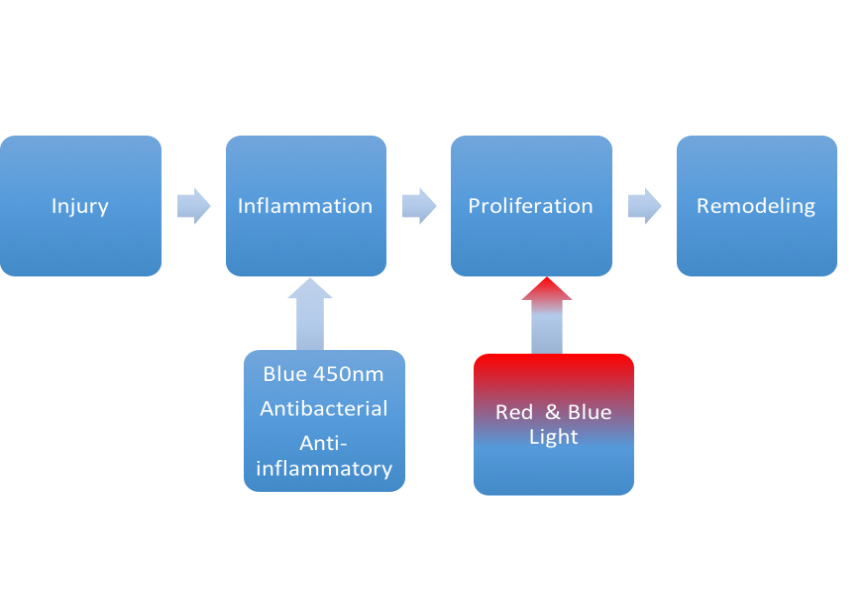Overview
The value of phototherapy as a clinical armamentarium remains contentious, even though the pain of head and neck origin and those associated with carpal tunnel syndrome and other conditions have earned phototherapy the approval of the US Food and Drug Administration. Applications of Photobiomodulation, including treatment of soft tissue injuries and acceleration of wound healing, are gaining interest. Studies have demonstrated improved clinical outcomes, increased cytoprotective factors and improved cell survival in animal models of Parkinson’s disease, diabetes mellitus, ulcers etc. Moreover, our previous studies and those of others clearly show that blue light is antimicrobial and has the additional potential to promote healing. These findings, coupled with our years of work, which indicate that certain wavelengths of red and near infrared light promote tissue repair in animal and human studies, clearly suggest that a combination of certain wavelengths of blue and red light could be effective in stemming infection while promoting wound healing.
Wound healing
We utilize in vitro and in vivo wound models to study the effects of red light on healing and tissue repair. Experimental designs are developed at all phases involved in the wound healing process as stated in the diagram below.

Our pioneer studies indicate that when two strains of MRSA, the USA-300 CA-MRSA strain predominantly found in the US, and the IS-853 strain HA-MRSA also predominantly in the US, were irradiated with various doses of blue light, there was a dose dependent reduction in bacteria colony count, regardless of bacteria strain. This observed identical effect of varying doses of blue 405 nm and 470 nm light on two different strains of MRSA suggest that: (1) both wavelengths of light use similar mechanisms to photo-destroy bacteria, and (2) both have the capacity to suppress other strains of bacteria. As such we are investigating the antimicrobial effects of blue 405, 450 and 470nm light on a battery of other Gram positive, Gram negative and anaerobic bacteria, including P. acnes, Salmonella enterica, and currently E. coli.

We have been working with Sonovia Holdings as a part of the effort to produce “state of the art” wearable, flexible, lighted substrates, and to optimize the protocols for bacteria suppression. Together with Sonovia, we propose to develop a wearable, ultra-lightweight device, with combined blue and red light flexible printed substrate laminated to an advanced hydrogel wound dressing, that inhibits infection and accelerates healing simultaneously. This device will drastically reduce all wound infections—particularly recalcitrant wound infections—minimize pain, accelerate healing and enable quicker return of personnel to daily activities.